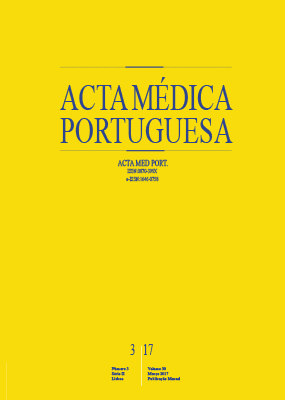Osteosynthesis in the Surgical Treatment of Prognathism: State of The Art
DOI:
https://doi.org/10.20344/amp.7788Keywords:
Absorbable Implants, Bone Plates, Bone Screws, Orthognathic Surgical Procedures, Prognathism/surgeryAbstract
Introduction: Prognathism is a common skeletal facial abnormality, associated with class III malocclusion, often with repercussions in quality of life. In addition to orthodontic treatment, sagittal split ramus osteotomy is the most common technique for its correction, and segment osteosynthesis is an important element of the post-surgical outcome.
Materials and Methods: A search for relevant literature was conducted in the PubMed/MEDLINE database and in other relevant sources.
Results: The stability of different fixation methods, their repercussions on inferior alveolar nerve lesions, and the type of material are among the most researched subjects.
Discussion: Recent research about the type of osteosynthesis applied in the sagittal split ramus osteotomy for mandibular setback is discussed.
Conclusion: Miniplates appear to be the better option for fixation of sagittal split osteotomy for mandibular setback. Bioabsorbable osteosynthesis may be an acceptable alternative to titanium.
Downloads
Downloads
Published
How to Cite
Issue
Section
License
All the articles published in the AMP are open access and comply with the requirements of funding agencies or academic institutions. The AMP is governed by the terms of the Creative Commons ‘Attribution – Non-Commercial Use - (CC-BY-NC)’ license, regarding the use by third parties.
It is the author’s responsibility to obtain approval for the reproduction of figures, tables, etc. from other publications.
Upon acceptance of an article for publication, the authors will be asked to complete the ICMJE “Copyright Liability and Copyright Sharing Statement “(http://www.actamedicaportuguesa.com/info/AMP-NormasPublicacao.pdf) and the “Declaration of Potential Conflicts of Interest” (http:// www.icmje.org/conflicts-of-interest). An e-mail will be sent to the corresponding author to acknowledge receipt of the manuscript.
After publication, the authors are authorised to make their articles available in repositories of their institutions of origin, as long as they always mention where they were published and according to the Creative Commons license.









